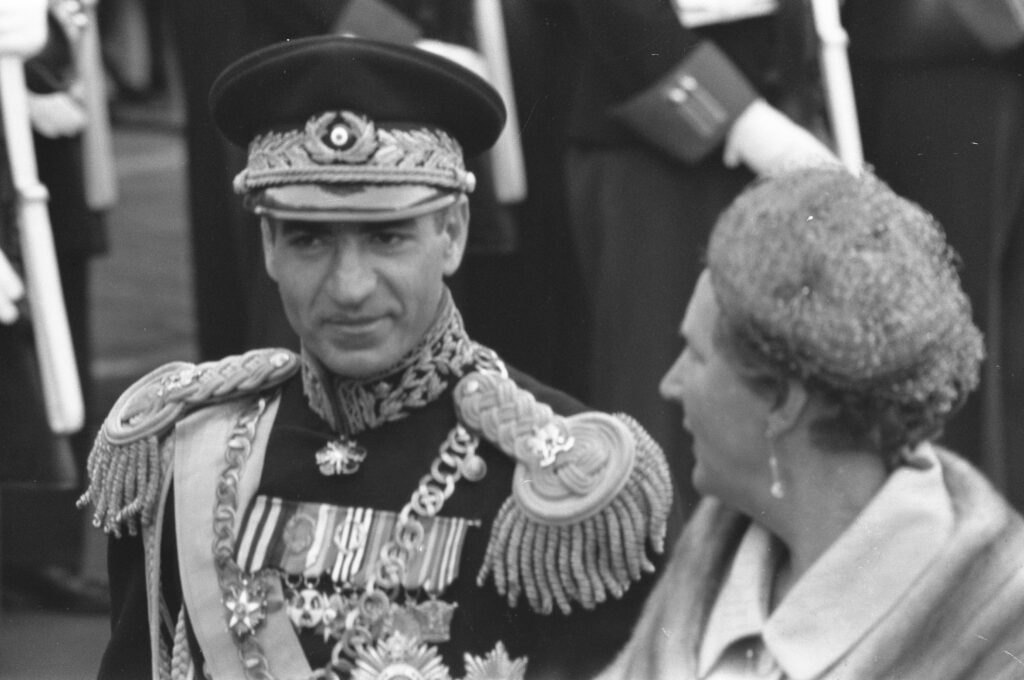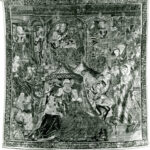Mohammad Reza Pahlavi, also known as Shah Mohammad Reza Pahlavi, was the last Shah (king) of Iran. He was born on October 26, 1919, in Tehran, Iran, and reigned from 1941 until he was overthrown during the Iranian Revolution in 1979. Pahlavi played a significant role in shaping Iran’s modern history, introducing various reforms and overseeing a period of rapid modernization and development in the country.
Pahlavi was the eldest son of Reza Shah, the founder of the Pahlavi dynasty and the first Shah of Iran. Reza Shah came to power in 1925, following a period of political instability, and embarked on a mission to modernize Iran. Mohammad Reza Pahlavi’s upbringing was influenced by his father’s vision of a modern, secular Iran.
In 1941, during World War II, British and Soviet forces invaded Iran to secure Iranian oil fields and to ensure the supply route to the Soviet Union. Reza Shah, due to concerns about his pro-German sympathies, was forced to abdicate in favor of his son, Mohammad Reza Pahlavi, who was just 22 years old at the time.
During his early years as Shah, Mohammad Reza Pahlavi faced numerous challenges, including the aftermath of World War II, political instability, and pressure from various factions within Iranian society. He sought to consolidate his power and modernize Iran further, introducing a series of reforms known as the White Revolution.
The White Revolution, launched in 1963, aimed to modernize Iran’s economy, education, land reform, and women’s rights. It included measures such as the nationalization of forests and pasturelands, granting women the right to vote, and the establishment of the Pahlavi University. The reforms were met with both support and opposition, highlighting the divide within Iranian society.
One of the significant aspects of Pahlavi’s rule was his close ties with the West, particularly the United States. He pursued a policy of Westernization, fostering economic and military ties with the United States and receiving substantial military aid. This close relationship with the West, particularly the U.S., generated resentment among certain segments of Iranian society, who saw it as a threat to their sovereignty and national identity.
Pahlavi’s rule also witnessed economic growth and modernization. The Iranian economy experienced significant development, driven by the oil industry and other sectors. Infrastructure projects, industrialization, and improvements in education and healthcare were prioritized. However, the benefits of this economic growth were not evenly distributed, leading to socio-economic disparities and discontent among the lower classes.
As his reign continued, opposition to Pahlavi’s rule grew stronger. Dissatisfaction with his autocratic style of governance, corruption within the ruling elite, and the suppression of political dissent fueled widespread protests and social unrest. These tensions eventually culminated in the Iranian Revolution of 1979, a popular uprising led by a diverse coalition of groups, including religious clerics, leftists, nationalists, and students.
The revolution, characterized by mass demonstrations and strikes, led to Pahlavi’s overthrow and the establishment of an Islamic Republic in Iran, under the leadership of Ayatollah Ruhollah Khomeini. Pahlavi fled the country on January 16, 1979, seeking medical treatment in Egypt and later relocating to the United States.
During his exile, Pahlavi sought to mobilize support for the restoration of the monarchy in Iran. However, his efforts were largely unsuccessful, and he lived the remainder of his life in the United States. He passed away on July 27, 1980, in Cairo, Egypt, at the age of 60.
Mohammad Reza Pahlavi’s legacy remains a subject of debate and controversy. Supporters credit him with modernizing Iran and initiating significant reforms, while critics point to his autocratic rule, economic disparities, and his close ties with foreign powers. The Iranian Revolution and the establishment of the Islamic Republic brought about profound changes in Iran’s political, social, and cultural landscape, effectively ending the Pahlavi dynasty’s rule.
Bibliography:
1. Afary, Janet, and Kevin B. Anderson. Foucault and the Iranian Revolution: Gender and the Seductions of Islamism. University of Chicago Press, 2005.
2. Bakhash, Shaul. The Reign of the Ayatollahs: Iran and the Islamic Revolution. Basic Books, 1984.
3. Cronin, Stephanie. The Making of Modern Iran: State and Society under Riza Shah, 1921-1941. Routledge, 2019.
4. Gasiorowski, Mark J. Mohammad Reza Pahlavi: The Last Shah of Iran. Palgrave Macmillan, 2006.
5. Pahlavi, Mohammad Reza. Answer to History. Stein and Day, 1980.
6. Sajjadi, Nasrollah. “The White Revolution: Land Reform and the Formation of the Pahlavi State in Iran.” International Journal of Middle East Studies, vol. 32, no. 3, 2000, pp. 267-284.
7. Sullivan, Earl L. Women in Iran from 1800 to the Islamic Republic. University of Illinois Press, 1986.







